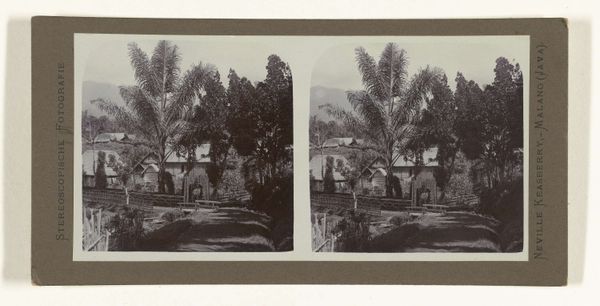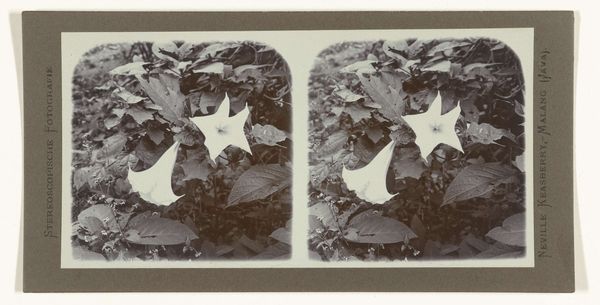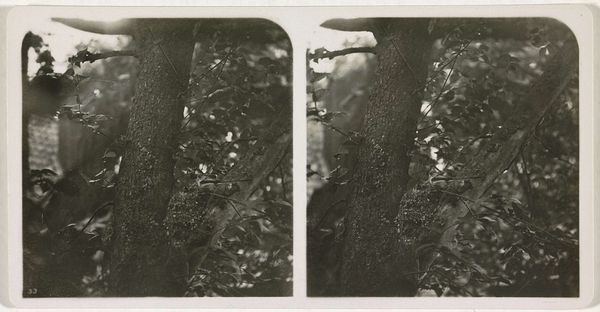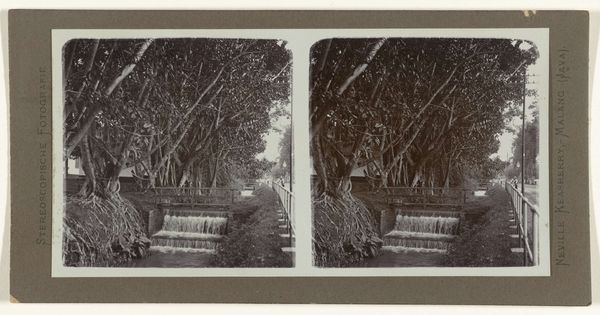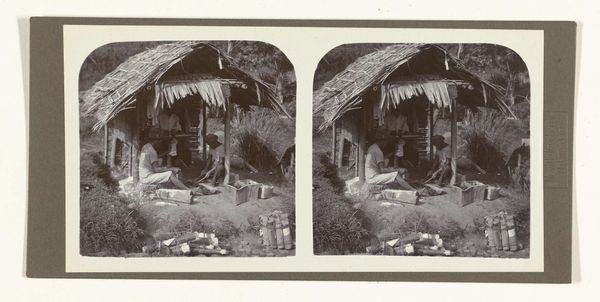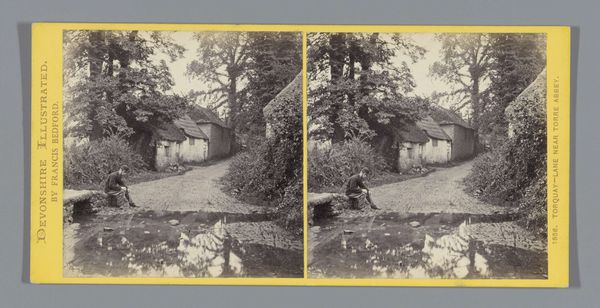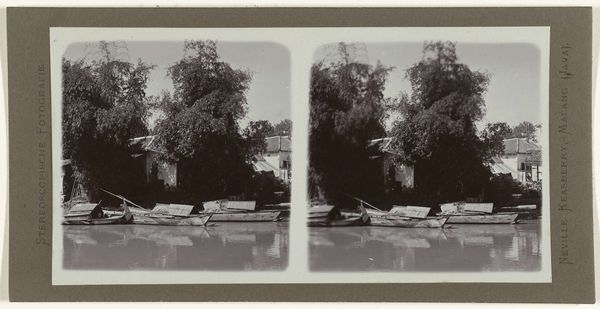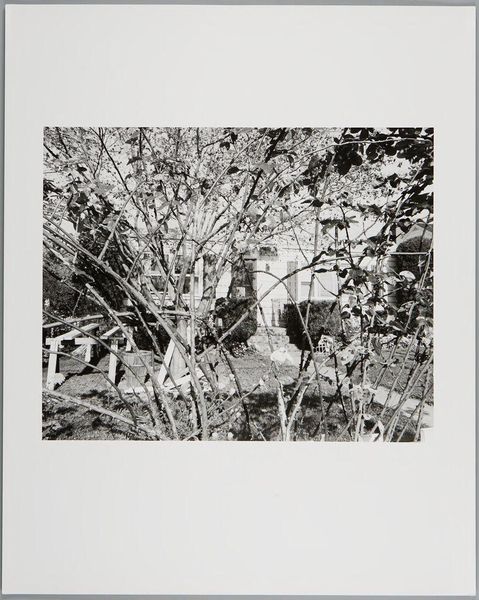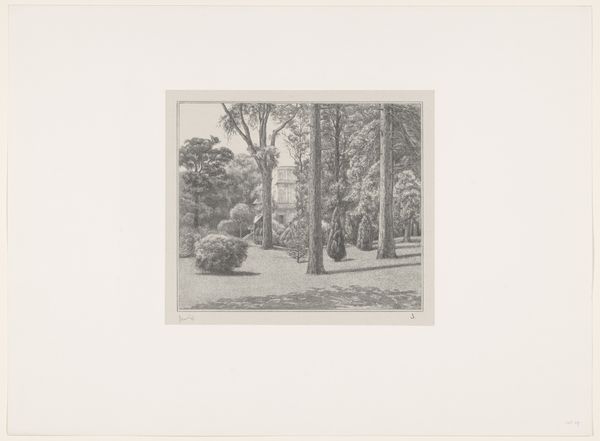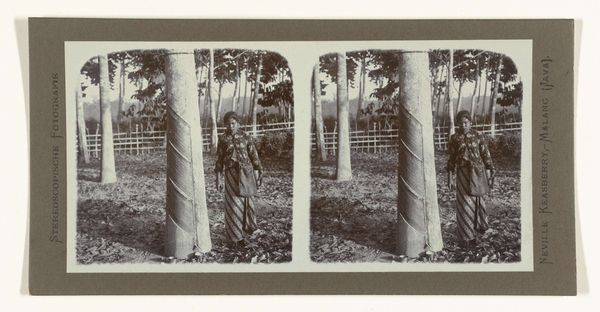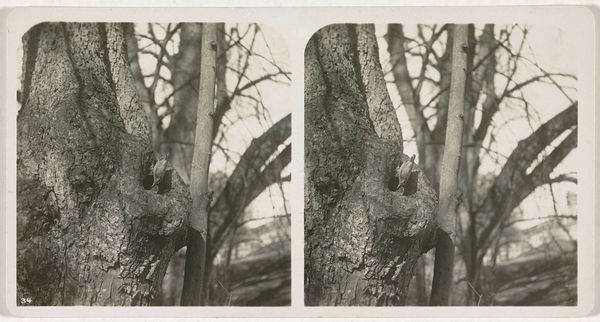
photography
#
landscape
#
photography
#
orientalism
Dimensions: height 76 mm, width 152 mm
Copyright: Rijks Museum: Open Domain
Editor: So this is a photograph titled "Overblijfselen van een kleine tempelpoort bij Singosari," or "Remains of a Small Temple Gate at Singosari" by Neville Keasberry. It looks like it was taken sometime between 1900 and 1935. I'm struck by the contrast between the clear detail in the architectural ruins and the softer focus of the surrounding foliage. What do you make of it? Curator: The photograph exemplifies a moment of colonial encounter and representation. It fits into the broader category of Orientalist photography, but differs because it's a landscape depicting temple ruins rather than a staged portrait of local inhabitants. Considering the time period, photography played a significant role in how Western audiences perceived colonized regions. Editor: How so? Curator: Photography reinforced existing power dynamics and prejudices. Images like these presented a view of a "lost" or "fallen" civilization needing guidance and control. Do you see how the framing emphasizes the fragmented state of the temple remains? It subtly suggests a narrative of decline. Editor: I hadn't thought about it that way, I just thought of the passage of time. Was it common to photograph ruins for those purposes? Curator: Absolutely. This aesthetic of ruins served specific political agendas. Images circulated widely, shaping public opinion. Also the inclusion of lush foliage creates a picturesque, even romantic scene. So what initially looks like a benign landscape actually carries layers of historical and political meaning. Editor: That is surprising. I came in with an expectation about photographs being neutral representations of what exists. Curator: Precisely! Analyzing these photos allows us to unpack cultural biases embedded within visual documentation of that time, and consider its place in shaping public perceptions then and now. Editor: I will think differently about photographs now, understanding that they’re often constructed to send a particular message.
Comments
No comments
Be the first to comment and join the conversation on the ultimate creative platform.
